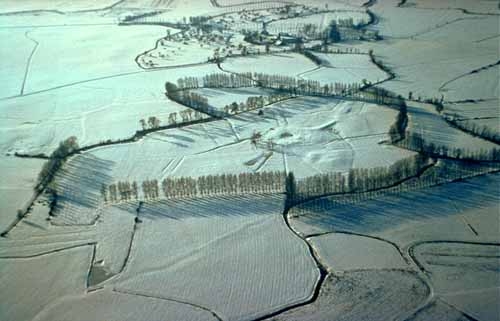- Home
- Discoveries
- Gallic settlements
- The aedeficia
- The actual isolated, large-scale farms
Today, isolated, large-scale farms are relatively rare in the north of France. The largest are those that were built in the nineteenth century or those located in the zones that were devastated between 1914 and 1918 by World War I. Many of these have a straight-line, mostly rectangular layout, and are delimited by walls and curtains of trees in the most stereotypical fashion.
They are reminiscent of the geometric arrangement of Gallo-Roman villas and they sometimes have the same architectural coherence.
The older isolated farms are especially of interest, such as those at Moyenneville or Rue, because one wonders if there are not some similarities with "Gallic" farms. Both aerial views and land registries show them surrounded by large hedges and several lines of trees, sometimes planted on tight levees of earth, lined with small ditches. The whole forms a network of nested enclosures, generally curved in shape. Most often, we can distinguish two types of nested enclosures.
An internal enclosure (I) is part of a much larger and more irregular enclosure (II). In northern France, enclosure (I) is built around the house, farm buildings, barns, stables, pigsty, henhouse, and the garden — this is the courtil, as it is still called today by farmers in Picardy. The enclosure (II) is much larger and is called the plant (planted pasture).
Picardy farm of today with its system of nested enclosures much like during the Gallic era. Moyenneville (Somme).
Traditional farm that was abandoned in the mid-twentieth century. The network of tree-lined enclosures is still quite visible, and the raking light emphasizes the traces of ancient constructions in the center. Near Rue (Somme).

